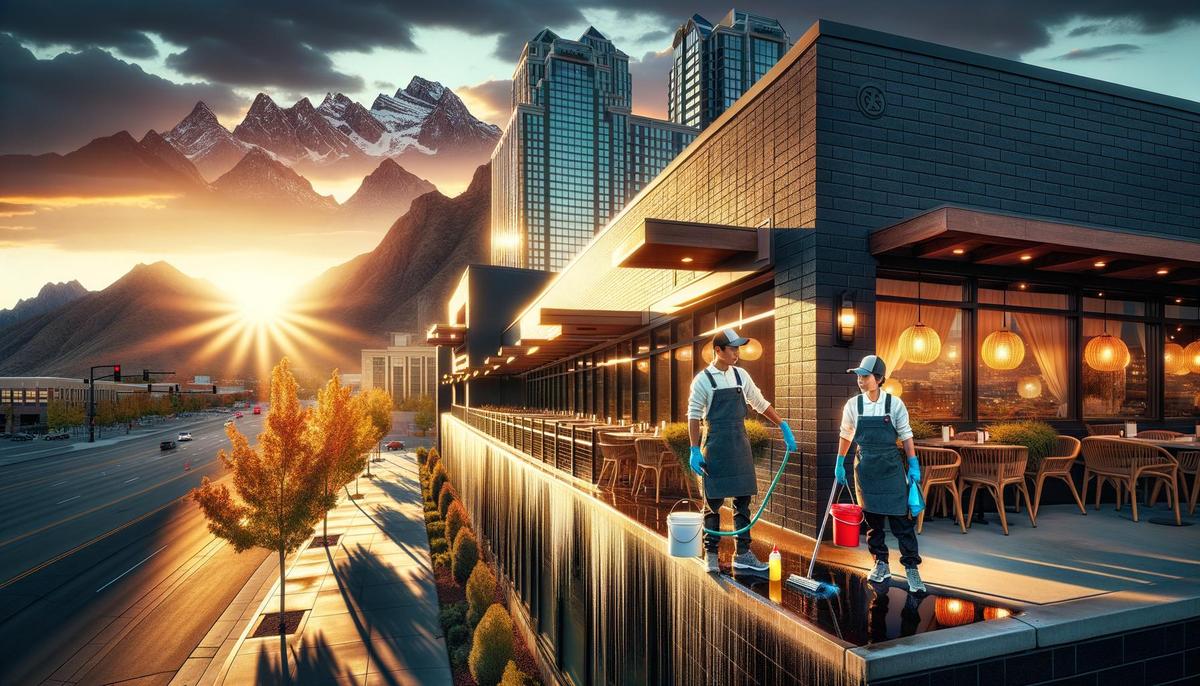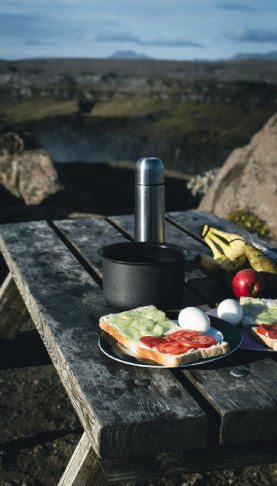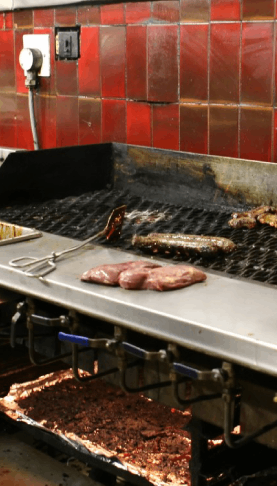If your restaurant in Salt Lake City takes on water, act fast: shut off the water source and power if it is safe, block the area, protect food and clean equipment, remove standing water, and call a local team that handles water damage cleanup Salt Lake City. Photograph everything before moving it, start drying within one hour if possible, keep humidity under control, and contact your insurer right after you stop the leak. This keeps people safe, protects your food permit, and gives you a real chance to reopen sooner.
Why water incidents hit restaurants harder than other businesses
Kitchens have heat, moisture, and organic waste. That mix can go wrong fast when water gets loose. Food safety rules add pressure. Your walk-in, prep tables, and flooring do not forgive standing water.
Guests also notice even small changes. A damp smell lingers. Staff lose rhythm. And the clock keeps ticking on labor, produce, and bookings.
I have seen offices sit damp for a week and still salvage most of it. A cafe does not get that luxury. You face three fronts at once: safety, food integrity, and the dining experience. It sounds like a lot because it is.
Time is your lever. The first 60 minutes shape the next 6 days.
The first 60 minutes: a clear, calm checklist
You do not need perfection. You need momentum and a few smart choices. Use this as a quick guide.
Make the area safe
– Turn off electricity to affected zones if you can reach the panel safely.
– Shut the main water valve or the local supply to the leaking line.
– Place wet floor signs at all approaches.
– Keep guests and nonessential staff out.
Short, simple actions. No hero moves. If you are unsure about power, wait for a licensed pro.
Protect food and surfaces
– Move exposed food away from the wet area.
– Discard any food in cardboard, paper, or soft plastic packaging that touched the water.
– Transfer high-value items to clean, closed containers.
– Cover clean prep tables with food-grade film if spray or mist is present.
Water and food do not mix, even if the water seems clean. Restaurant water events can shift categories fast.
Document right away
– Take wide photos of rooms and close-ups of damage.
– Record short videos showing water paths and drains.
– Note times: leak discovered, water shutoff, first cleanup steps.
– Save receipts for supplies and extra labor.
Photos before cleanup save hours later with insurance and health inspectors.
Start moving water out
– Use a wet vac for puddles.
– Squeegee water to floor drains if drains are clear.
– Pull removable mats to a dry, ventilated space.
– Open windows if outdoor air is dry and clean.
If you have a dehumidifier, start it now. If you do not, focus on extraction. Airflow comes after standing water is gone.
Make two calls
– Restoration company for extraction and drying.
– Insurance claims line to open a file.
You can keep going while you wait, but those calls start the clock on help and coverage.
| Action | Why it matters | Who handles it | Target time |
|---|---|---|---|
| Shut off water/power | Prevents hazards and more damage | Manager or maintenance | First 5 minutes |
| Food safety triage | Protects permit and guests | Kitchen lead | First 15 minutes |
| Photos and notes | Supports claims and inspections | Any supervisor | First 20 minutes |
| Water extraction | Speeds drying and reduces mold risk | Staff, then pros | First 30 to 60 minutes |
| Open claim and book help | Aligns payment and timeline | Owner or GM | First hour |
Food safety triage for kitchens
This part is strict by design. A little caution saves your brand. If there is any contact with sewage, skip to the discard list and plan for deep disinfection.
Discard right away
– Any food or ice that touched the water, including sealed cardboard and thin plastic bags.
– Ready-to-eat items near splashes or mist.
– Produce stored low to the floor.
– Single-use items stored in cardboard: cups, napkins, to-go boxes.
– Open dry goods in paper or thin plastic.
– The first 2 inches of bulk goods in bins if the floor flooded.
Salvage with care
– Intact metal cans not swollen or rusted: remove labels, clean with detergent, rinse, then sanitize, and relabel with a marker.
– Sealed glass jars with unbroken lids: wash, rinse, sanitize.
– Sealed containers in rigid plastic totes: wipe, sanitize, dry.
If you feel uncertain about an item, that tells you something. When in doubt, throw it out. You will never regret food you removed from risk.
Prep and equipment
– Sanitize stainless surfaces after extraction and again after drying.
– Pull gaskets on coolers if water reached door bottoms and clean channels.
– Scoop and discard any ice in machines; clean and sanitize per manufacturer steps.
– Wash and sanitize utensils and smallwares stored below waist height.
Health departments care less about the water source and more about what you kept and how you cleaned.
Drying strategy that fits restaurants
Drywall, baseboards, toe kicks, and subfloors hold moisture. Kitchens also trap humidity behind equipment. Setup matters.
Sequence beats speed
– First remove standing water.
– Then remove items that trap moisture: mats, base plates on line equipment, bottom shelves if portable.
– Then create airflow paths: angle fans to move air across wet surfaces toward dehumidifiers.
– Then control temperature: room-warm air dries faster than cold air.
Aim for steady progress. I like to check moisture with a basic meter, but if you do not have one, track by touch and weight. Materials that feel cool are often still wet.
Containment and clean zones
Set a plastic barrier if the dining room is dry and the kitchen is wet. Keep front of house serviceable if you can run a limited menu, but do not force it. If odors creep in, pause service. A short closure beats reviews that last years.
Salt Lake City climate quirks
Dry air is common, but winter storms and spring melt bring bursts of humidity. Basements are common in older buildings. Roof drains can clog with leaves, then freeze. Evaporative coolers can leak at roof level and drip for hours before anyone notices.
– In winter, keep gentle heat running during drying to prevent condensation on cold surfaces.
– In summer, open windows only if the outside air is dry that day.
– In shoulder seasons, watch nighttime temperature drops that can slow drying.
Categories of water and what they mean for your plan
People argue about this, but the simple version helps.
– Category 1: Clean supply line, no dirt or waste. Fast cleanup can save materials.
– Category 2: Dishwash overflow, rain that ran across the floor, cooler drains. Treat as contaminated.
– Category 3: Sewage, outside floodwater, water with grease trap contents. Remove and replace porous materials.
Materials react differently.
– Porous: drywall, ceiling tiles, cardboard, fabric. Often need removal if wet with Category 2 or 3.
– Semi-porous: wood, concrete. Can dry if Category 1 or 2 and time is short.
– Non-porous: stainless, tile, sealed metals. Clean, sanitize, dry.
Once water touches grease or soil, treat it like Category 2 at least.
Working with your insurer without losing days
Insurance wants proof and a clear plan. Give them both.
What to collect
– Photos before and after extraction.
– A list of affected areas and square footage.
– Food loss inventory with rough replacement values.
– Labor hours linked to cleanup tasks.
– Any service reports from plumbers or electricians.
Keep a simple log
| Date/Time | Action | Person | Notes |
|---|---|---|---|
| Mon 7:40 am | Found line leak | AM manager | Shut main in 4 minutes |
| Mon 7:55 am | Photos and video | Sous chef | Walk-in dry, line flooded |
| Mon 8:05 am | Claim opened | Owner | Claim #123456 |
| Mon 8:20 am | Extraction started | Restoration tech | Two wet vacs, one pump |
Adjuster visits tend to go smoother when you have clean, time-stamped notes. It looks professional. It also helps you remember what changed.
When to bring in professional help
You can mop and move items. You can run fans. There is a point where a crew with extraction tools and dehumidifiers saves you both money and days.
Call in pros if:
– Water is under walls, under tile, or in a crawlspace.
– The walk-in floor insulation may be wet.
– There is any sign of sewage or grease trap overflow.
– You need to stay open in part of the space while drying the rest.
– Odor remains after 24 hours of airflow.
– You see moisture wicking up drywall seams.
Experienced teams know how to document for insurers and health departments. Ask for a moisture map and daily readings. Ask how they will protect food areas and manage air movement away from prep zones.
Kitchen equipment: what to do and what to leave
Stainless is your friend. Water on stainless is usually a cleaning problem, not a replacement problem.
– Ovens and ranges: cut power, let techs inspect before using. Clean, then heat-dry later under supervision.
– Refrigeration: keep doors closed if units are dry inside. Do not run a wet compressor.
– Small appliances: unplug and dry, but do not power on until checked.
– Floor-mounted equipment with toe-kicks: remove kick plates to allow airflow.
– POS and printers: move to a dry counter, power down, cover against spray.
If you need to choose, focus on things that spoil or cause safety risks first. Equipment that just got wet can wait a few hours.
Communication with staff and guests
People appreciate straight talk. Short messages work better than long apologies.
For staff:
– “Water line break at 7:40 am. Breakfast closed, lunch pending. Check Slack at 11 am for update. If you are scheduled before noon, hold for now. Safety training at 10:30 for those on site.”
For guests:
– “We had a small water issue this morning and are taking care of it. We plan to reopen later today once the kitchen is fully safe and dry. Thank you for checking in with us.”
I know temptations to say it is minor. Sometimes it is. Sometimes it becomes bigger after you pull the first baseboard. Leave yourself room to adjust.
Common sources of water in Salt Lake City restaurants
– Supply line breaks during winter freeze-thaw.
– Roof leaks from clogged scuppers or evaporative cooler pans.
– Dishwasher discharge line failures.
– Walk-in condenser drain clogs.
– Fire suppression discharges after service work.
Each source points to a prevention plan. A simple checklist helps.
Prevention checklist you can run each season
Winter prep
– Insulate exposed pipes and backflow preventers.
– Heat-trace vulnerable lines where allowed.
– Check door sweeps to reduce drafts near pipes.
– Confirm roof drains are clear before the first snow.
Spring melt and rain
– Inspect gutters and downspouts.
– Test sump pumps and alarms.
– Seal floor penetrations in the kitchen and mop sink areas.
– Clean trench drains and confirm grates seat properly.
Year-round quick wins
– Install water sensors under sinks and near dish machines.
– Use auto-shutoff valves on ice makers and coffee machines.
– Keep an extra wet vac, squeegee, and plastic sheeting on hand.
– Train a small team on rapid response with a 10-minute drill once a quarter.
It sounds like work, but it becomes routine. Staff will even start to like the drills once they see how fast a team can move.
Mold risk and odor control
Mold spores are everywhere. They need moisture and time. Keep humidity under 50 percent if you can.
– Extract water fast.
– Run dehumidifiers and controlled airflow.
– Remove wet drywall that will not dry within two days.
– Bag and remove debris out a back route to avoid spreading dust.
– Use HEPA air scrubbers if you see visible growth or smell musty air.
Bleach is strong but not always the right tool on porous materials. Cleaners that fit food service rules and the material you are treating are better. Stainless and tile accept many sanitizers. Unsealed wood does not.
Mistakes that slow reopenings
– Waiting for a perfect plan before starting extraction.
– Pushing air across floors while water still stands.
– Skipping photos in the rush.
– Keeping food you feel bad throwing away.
– Running wet refrigeration or dish machines.
– Forgetting to check under the line and inside cabinets.
Each of these adds a day. Sometimes more. Solve what you can reach first and build from there.
What to ask a restoration company before they start
You want a team that understands restaurants. Many do. Ask simple, direct questions.
– Do you have techs trained on commercial kitchens?
– Can you work overnight to speed reopening?
– How will you protect prep surfaces and food storage?
– Will you provide daily moisture readings and a moisture map?
– Do you handle contents cleaning or should we manage that?
– Can you coordinate with our electrician and plumber?
| Question | Good sign | Watch-out |
|---|---|---|
| Kitchen experience | References from local restaurants | Only residential examples |
| Schedule | Overnight or off-hours plan | “We will see when we get there” |
| Documentation | Daily readings with photos | No clear reporting method |
| Protection | Plastic barriers, filter changes, HEPA | Fans only, no containment |
If you hear clear answers and a simple scope, you are on the right track.
Costs and timelines in Salt Lake City
Every site is unique. Still, ranges help you plan staffing and vendor calls.
| Scenario | Typical scope | Rough cost | Time to dry | Time to reopen |
|---|---|---|---|---|
| Small line leak on kitchen line | Extraction, dehumidifiers, baseboard pull | $1,500 to $4,000 | 1 to 2 days | Same day to 2 days |
| Dish area overflow into dining room | Extraction, carpet drying, some wall cuts | $3,000 to $8,000 | 2 to 4 days | 1 to 4 days with partial service |
| Roof leak over kitchen during storm | Extraction, ceiling tile replacement, equipment checks | $5,000 to $12,000 | 3 to 5 days | 2 to 5 days |
| Sewage backflow affecting kitchen drains | Removal of affected materials, disinfection, rebuild | $8,000 to $25,000+ | 4 to 7 days dry | 1 to 3 weeks with rebuild |
Use these as planning markers, not promises. Scope expands when hidden moisture shows up, or shrinks when materials dry faster than expected.
A short story from a breakfast spot near downtown
A brunch place I worked with had a 6 am line break behind the espresso bar. The manager cut water in three minutes. He took photos, then moved pastries and milks. Staff started squeegeeing water to a clean floor drain. A restoration crew arrived at 7:30 am with two techs, pulled baseboards and toe-kicks, and set six fans and two dehumidifiers. They ran overnight.
By 10 am the smell was gone. At noon, the bar was dry to touch, and they served coffee from a pop-up station near the door. Full menu returned the next day. They threw out 400 dollars of product instead of trying to save it, and I think that decision saved them thousands in time and reputation.
Would every case go that smoothly? No. But the pattern holds. Early action shortens the tail.
Building a simple water response plan for your restaurant
Write one page. Laminate it. Hang it by the office door.
What to include
– Main water shutoff and breaker locations with photos.
– First five steps with names: who does what.
– Food discard rules in one sentence.
– Vendor list with 24-hour numbers.
– Claim number and policy info once you open a file.
– Where to find the wet vac, squeegee, plastic sheeting, and towels.
Train new leads in one short session. I prefer a 10-minute walk-through during a slower shift.
Restaurant-specific rebuild tips
If walls or floors need replacement, choose materials that help you next time.
– Use water-resistant wall panels in splash zones.
– Seal concrete floors with a commercial coating that tolerates cleaning.
– Raise equipment on legs where code allows to improve airflow and cleaning.
– Add inspection ports for walk-in floors if feasible.
– Upgrade floor drains with better grates and cleanouts.
A small change in build details can cut a future drying job in half.
Local quirks that catch teams off guard
– Older mixed-use buildings with shared plumbing stacks mean a leak two floors up becomes your problem later.
– Evaporative coolers on roofs can soak ceilings very quietly. Walk the roof after windy days.
– Snowmelt can overload gutters in late afternoon, then refreeze at night, and leak slowly for days. Check for staining on ceilings near exterior walls.
– Many restaurants in the area have basements used for storage. Keep items on racks at least 6 inches off the floor.
These do not apply to everyone. If you know your building, you already have an edge.
What to do the day after
– Walk each area with a light and your nose. Mark any musty spots.
– Check moisture under mats and under the line.
– Review the food loss list and reorder top sellers first.
– Send a short staff note about what went well and what to change.
– Post a guest update if hours or menu are still limited.
Small follow-ups protect the gains from day one.
Quick Q&A to keep handy
How fast can I reopen after water damage?
If the water was clean, the area is dry to touch, prep surfaces are sanitized, and you have a safe path for staff, you can sometimes reopen the same day with a limited menu. Many reopen in 1 to 3 days. If sewage was involved, expect a longer path and likely inspections before service.
Can I save produce that was near the water but did not touch it?
If it was in a sealed cooler or sealed container, maybe. If it was in open bins or near splashes, discard it. The risk to guests outweighs the cost.
Is bleach enough to sanitize after a flood?
Bleach works on some hard surfaces, but it is not right for all materials, and fumes are a concern in kitchens. Food-safe sanitizers that match the surface are often better. Follow label directions and contact time.
Do I need to replace drywall every time?
Not always. If water was clean, exposure was short, and you started drying quickly, you can sometimes dry drywall in place. If seams swell or water was dirty, plan to cut and replace.
What about the smell that lingers?
Odor comes from moisture and organic material. Extract more, increase dehumidification, clean hidden areas, and run HEPA air filtration for a day. Odor should fade as materials dry. If it does not, there is likely a wet spot you missed.
How do I talk to guests about a closure without hurting my brand?
Be brief and clear. “We had a water incident this morning. Our team is cleaning and drying the kitchen now. We plan to reopen tomorrow at 11 am. Thank you for your support.” People respect straight talk.
Should I keep a preferred vendor on file?
Yes. A team that knows your layout can shave hours off the first response. Save their 24-hour line in your phone and the office binder.
If you take one thing from this, let it be this: act early, keep food safe, and document everything. The rest falls into place faster than you might think.













